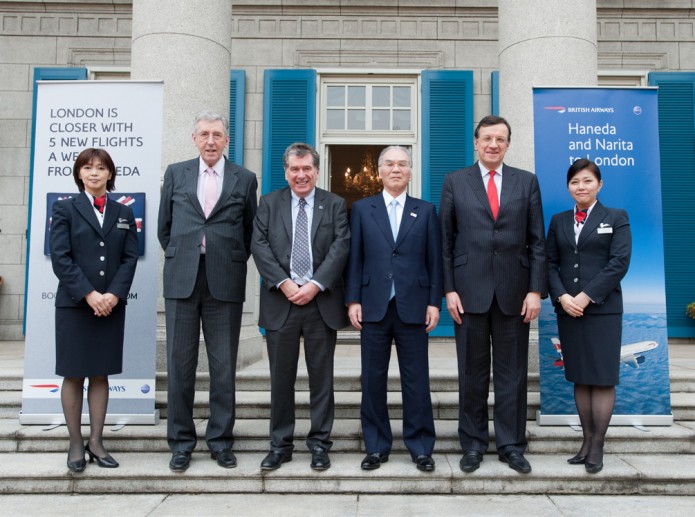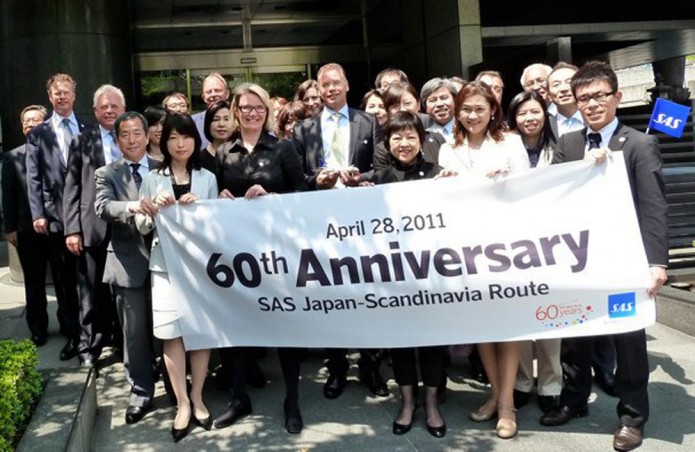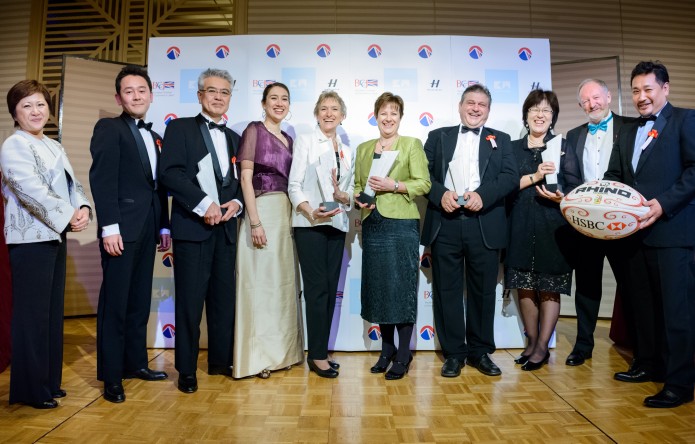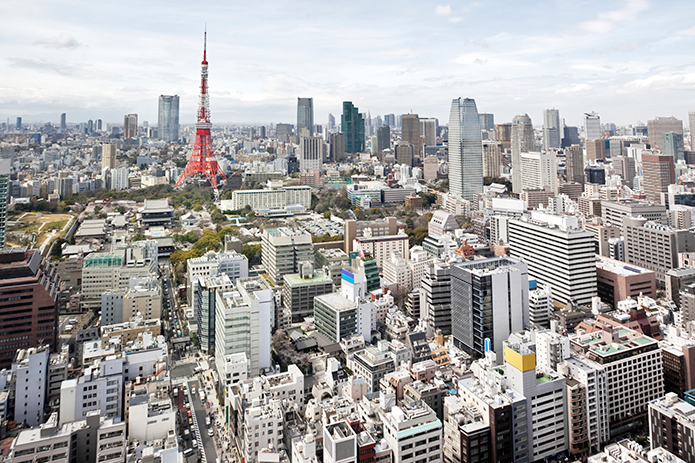Costs, convenience and connections are key to Japan’s survival as a regional hub and destination
The chrome and glass at Tokyo’s Narita International Airport and the international terminal at Haneda Airport gleam and sparkle, the lines for immigration and customs are orderly, rapid and unfailingly polite, while both facilities are efficient, clean and secure.
But what both arguably lack is the constant hustle and bustle that are a permanent backdrop to, for example, London’s Heathrow, JFK in New York and Charles de Gaulle in Paris. More worrying still for the operators of airports in a nation that desperately wants—and needs—to be a key destination in the region is the same frenetic toing-and-froing that can be seen at the new airports that meet the travelling needs of Seoul, Shanghai, Hong Kong and Singapore.
The airlines that serve both the airport at Narita and the recently revamped international terminal at Haneda Airport are upping their services with the introduction of sleek new aircraft, improved lounge facilities for travellers, as well as better in-flight meals and entertainment. But Japan’s position as a transit hub for East Asia, or a destination in its own right, has slipped.
The disasters that struck the north-east of Japan in March have played a part in that slide, unquestionably, but the sense among carriers today is that taking some tough decisions to liberalise the aviation sector in the immediate future will benefit the national economy and encourage increased use of two airports that could be showcase facilities for the rest of the world.
“From Japan, sales have been very good; we have had a solid summer and it’s nice to see things bouncing back after a period of self-restraint”, said Richard Myerscough, Japan country manager for Virgin Atlantic. “The forward indicators for this autumn and the winter are tough, but we are trying to add new incentives.
“The UK market for Japan is struggling to find its legs again”, he admits. “There’s the inflated yen on top of the natural disasters; and, as much as we tell travellers that Tokyo is completely safe and only a very small part of the country is still affected by the situation at the Fukushima nuclear plant, they then see a typhoon whipping through Tokyo on television”.
It is a similar story for American Airlines, which in April signed a business alliance with Japan Airlines that has effectively doubled the options for its customers wanting to travel to Japan or to onward destinations, said Theo Panagiotoulias, vice-president and managing director of the airline’s Asia-Pacific operations.
“Travel out of Japan has come back to its level before the earthquake faster than we expected, but the number of inbound passengers is really lagging”, said Panagiotoulias.
According to the Japan National Tourism Organisation, visitors are down about 30% overall on 2010 figures, and even more so for business travellers, due to ongoing economic uncertainties involving Japan.
One of the first casualties of the March disasters was the direct American Airlines route between New York and Haneda. It had only opened in February and was an immediate success with travellers, but became impossible to sustain as demand fell away steeply.
Yet Panagiotoulias is keen to reintroduce the route as soon as possible—and American has vowed to do so before the summer of 2012.
“Haneda is extremely popular here and there is a growing awareness in the United States of just how good an airport it is, particularly of how convenient it is for central Tokyo”, he said. “The shops and concessions in the new Haneda international terminal are exceptional, especially the high-end luxury goods, which are very popular with Japanese consumers, and the way the terminal is structured—in terms of access, transport links and within the terminal to the departure gates—is very good”.
As good as the airport’s facilities are, however, Haneda still suffers some serious drawbacks. The two key problems are the high costs for airlines using the airport, primarily in terms of landing fees, which are the most expensive in the world, and the lack of 24-hour public transport to mesh with the airport’s around-the-clock operations.

“The proximity to central Tokyo and its financial district is a key advantage for Haneda. The trip on the monorail between the airport and Hamamatsucho station takes just 15 minutes, but public transport options are limited for early morning departures, meaning that many customers choose to travel by taxi”, said Vishal Sinha, British Airways manager for Japan and Korea.
BA first started services to Haneda in 1948, as British Overseas Airways Corp. (BOAC), using a flying boat that took seven days to complete the journey via six cities. Today, it operates a daily service to Narita and five flights a week to Haneda.

British Airways restarted Haneda flights in February, flying five times weekly
“Strategically, it was important for British Airways to become a recognised carrier at Haneda Airport, allowing us to offer our customers a choice of two airports and two departure times”, said Sinha, adding that from his point of view, the restrictions on international flights between 11pm and 7am need to be relaxed to encourage more traffic.
The complaint is a common one among carriers.
“Haneda Airport only allows airlines to operate international flights to Europe between midnight and early morning”, said a spokesperson for Finnair Japan. “Therefore, Finnair cannot provide customers with the shortest and fastest flights”.
The airline is in talks with the Japanese government about adding extra flights between the two countries beginning next summer, on top of the services it already operates at Narita, Kansai International Airport and Nagoya’s Chubu International Airport.
But high landing fees and limited operating hours remain an issue that needs to be overcome for many carriers.
“Extending the operating hours comes as the first priority”, agrees Hasan Mutlu, general manager of Turkish Airlines’ operations in Japan. “That improvement would change everything in Tokyo radically as it would change, in a positive way, the plans and decisions made by all airlines operating here”.
The Turkish national carrier has six flights to Narita every week and a further five to Osaka, while it also aims to add Nagoya to its destinations in the near future, although Mutlu said any further expansion into this market is likely to be impossible unless operating hours can be altered.
And that, the industry points out, is the nub of the question: failure both to reduce costs, which are inevitably passed on to the consumer in the form of more expensive tickets, and to provide more attractive arrival and departure times is going to cost Japan dearly as travellers opt for other destinations or onward connections.
In the short term, that harms Japan’s position as an aviation hub in the region and negatively impacts the broader national economy, say analysts. And, they point out, aircraft technology is advancing to the point where it will be simple, in the not-too-distant future, for airlines to overfly Japan if the costs at its airports are prohibitive.
Given the changes that it has seen taking place at Haneda over the last couple of years, the operator of Narita Airport has made efforts to improve its services. These include completing the extension to its second runway, inaugurating the new Skyliner service to Ueno, and moving to increase the number of flights per annum from the present 220,000 to 300,000 in 2014. In addition, there are plans for more efficient use of Narita runways, supplementary domestic destinations, a new terminal for low-cost carriers from other Asian nations (potentially the most far-reaching development) and reduced landing fees for airlines that open new routes to Narita.

Scandinavian Airlines marked 60 years of serving Japan this year.
Scandinavian Airlines, for one, says Narita has become a more convenient airport, enabling it to link its daily flights to and from Copenhagen with close to 100 destinations across Europe. The airline marked its 60th anniversary of flights to Tokyo in April.
Similarly, James Evans, the head of marketing and sales in Japan for Cathay Pacific Airways, described Narita as a “very established and efficient airport”.
“Narita also has a good range of retail outlets, although it doesn’t quite compare with Hong Kong International Airport”, he said. “Cathay Pacific has been operating to Narita for a long time and we have been investing in our services there, including our own lounge”.
Cargo is also a very important part of Cathay Pacific’s business and Narita plays an important role in that area, he added. The airline has been operating between Hong Kong and Tokyo for 52 years and restarted services to Haneda last October, after a hiatus of nearly 30 years. From the end of October, it will return to operating two flights a day into Haneda and five daily to Narita.
“We all recognise that Narita is quite a way out of Tokyo but the connections to the city and elsewhere are well established and convenient”, he said. “Nevertheless, the travel time and the cost of travel to Narita do, in part, explain why the international expansion of Haneda has been welcomed to the degree it has been”.
And while night-time operations at Narita are limited out of consideration for local residents, there is no such problem at Haneda—although the government’s regulations state that long-haul flights must use the unpopular late-night and early-morning window. That, to some in the industry, smacks of Narita being effectively protected.

“Airports should be able to define their own markets”, said Virgin’s Myerscough. “Stansted is a long way out of London, for example, but it has developed a significant market and can drive new markets in suburbs in that region.
“Due to its geographical position, I can understand why Narita would naturally be perceived as the unattractive option, but there are still only so many international slots that Haneda can provide, so there would still be plenty of opportunities for Narita”, he said, pointing out that London has five international airports—Heathrow, Gatwick, Luton, Stansted and City.

Virgin Atlantic’s Clubhouse at Narita International Airport
“I truly believe that a city the size of Tokyo could support two competing international airports”, he said. “If they were allowed to liberalise further, then the different demographics and structures of the aviation world would find their natural fit. The high-cost flights and the low-cost services, the freight, business and point-to-point carriers, as well as the executive jet services would all capture their own markets.
“There is no reason that airports in Japan cannot do the same as those in the UK, as long as they have freedom of action”, he said. “They should be able to target their markets and operate to the best of their abilities, and that will inherently result in better pricing for the consumer and better services”.






